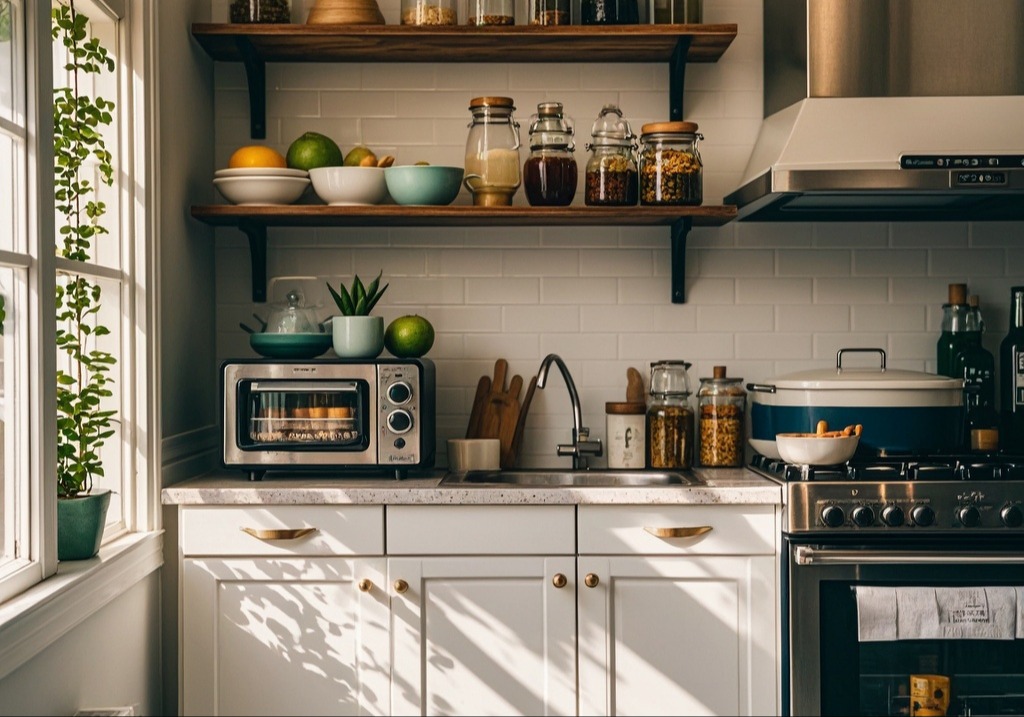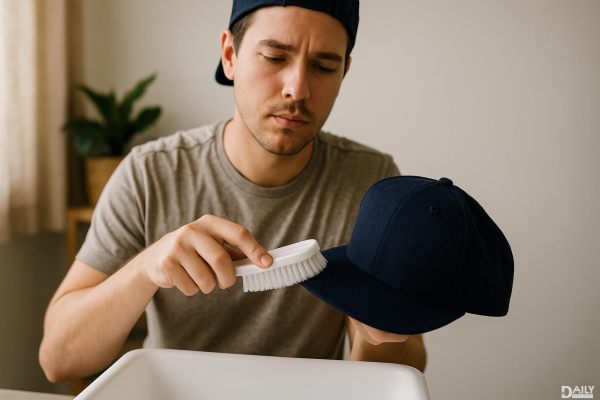Let’s be real—your kitchen is probably dirtier than you think. Sure, you wipe down the counters and scrub the sink, but there are sneaky little hotspots that get ignored way too often. And guess what? Those forgotten spots are basically bacteria’s favorite hangout.

From the fridge handle you touch with raw chicken hands to the sponge that’s been “cleaning” your dishes for weeks (yikes), we’re breaking down the grimiest places in your kitchen and how to actually keep them clean.
1. Knobs, Handles, and Touch Pads – The Germ Highway
Every time you open the fridge, adjust the microwave, or turn on the stove, you’re leaving behind a trail of bacteria. And if you’ve ever handled raw meat and then touched the faucet? Yeah, that’s a cross-contamination nightmare.
How to clean it:
Wipe down appliance handles, cabinet pulls, and control panels weekly (or more if you’re messy).
Use disinfectant wipes or a spray cleaner with a microfiber cloth.
Don’t forget the light switches—those get touched constantly but rarely cleaned.
2. The Sink – A Bacteria Playground
You’d think all that water would keep your sink clean, but nope. Food particles, grease, and soap scum love to hang out in the drain, around the edges, and under the rim. And if you’re tossing raw meat packaging in there? Double yikes.
How to clean it:
Disinfect daily—especially after handling raw food.
Scrub the drain and garbage disposal stopper with a brush and baking soda + vinegar.
Wipe down the faucet and handles (they’re germ magnets).
3. Sponges & Dishcloths – The Dirtiest “Cleaning” Tools
That sponge sitting by your sink? It’s probably dirtier than your toilet seat. Studies have found E. coli, salmonella, and mold thriving in damp sponges. And if you’re using the same rag to wipe counters and dishes? Not great.
How to clean it:
Microwave wet sponges for 2 minutes daily to kill bacteria.
Replace sponges every 2 weeks (or sooner if they smell funky).
Throw dish towels in the washing machine on hot after a day or two of use.
4. The Fridge – More Than Just Spilled Milk
Your fridge might be cold, but that doesn’t stop bacteria from partying in there. Meat juices, old leftovers, and unwashed veggies can leave behind nasty surprises—especially in the drawers and door shelves.
How to clean it:
Monthly deep clean: Pull out shelves and drawers, wash with hot soapy water.
Wipe up spills immediately (no one wants mystery fridge juice).
Vacuum the coils at the back—dust buildup makes your fridge work harder.
5. Cutting Boards – Tiny Knives = Tiny Germ Hiding Spots
Wooden cutting boards are great… until you realize they’re basically bacteria sponges. Even plastic boards get grooves where germs hide. And if you’re using the same board for chicken and veggies? That’s a food safety no-no.
How to clean it:
Separate boards for meat and produce.
Wash with hot, soapy water after every use (no lazy soaking).
For wood boards, oil them monthly to prevent cracks.
6. Small Appliances – Coffee Makers & Blenders Are Sneaky Gross
That coffee maker you use every morning? It’s probably growing mold in the reservoir. And your blender’s rubber gasket? A total bacteria trap.
How to clean it:
Run a vinegar-water cycle through your coffee maker monthly.
Take apart blenders & food processors to clean under the blades.
Wipe down can openers—they touch food directly and rarely get cleaned.
7. Reusable Bags & Water Bottles – The Forgotten Germ Carriers
Your grocery totes and Hydro Flask might be eco-friendly, but they’re also bacteria taxis if you don’t wash them. Leaky meat packages, sweaty gym bottles—yeah, they need love too.
How to clean it:
Designate bags for meat, produce, and cleaning supplies.
Toss lunch bags & grocery totes in the washing machine.
Soak water bottles with baking soda to kill odors.
8. Countertops – Where Everything (Including Germs) Lands
Your counters see it all—groceries, purses, mail, raw food prep. And if you’re wiping them down with a dirty sponge? You’re just spreading germs around.
How to clean it:
Disinfect before and after cooking.
Get into the corners and edges—crumbs love to hide there.
Skip the sponge—use disposable wipes or microfiber cloths.
9. Salt & Pepper Shakers – The Sneaky Culprits
Think about how many times you touch these while cooking—especially after handling raw ingredients. Yet when was the last time you actually cleaned them?
How to clean it:
Wipe down with a disinfecting wipe after cooking.
Give them a weekly deep clean in soapy water.
Final Tip: Make It a Habit
The key to a truly clean kitchen isn’t just deep cleaning—it’s staying on top of the little things. Wipe as you go, replace sponges often, and don’t let spills sit. Your stomach (and immune system) will thank you.
Now go forth and disinfect like a pro. Your kitchen’s counting on you.
























